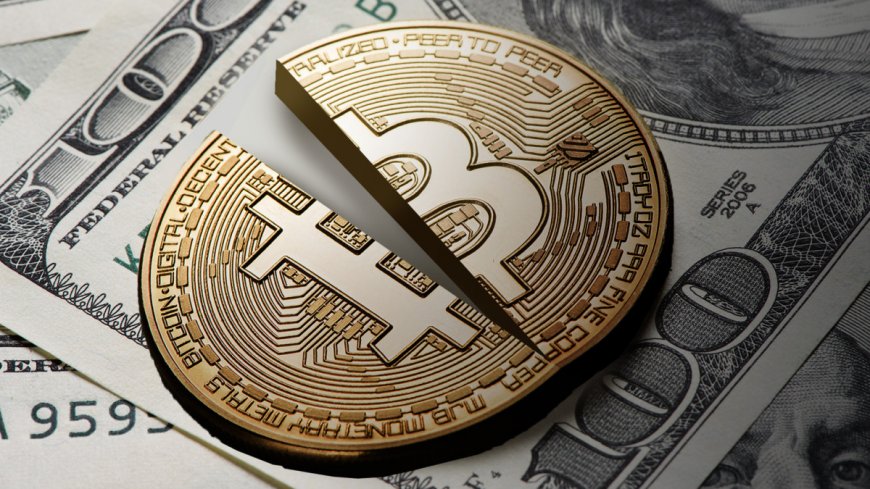Bitcoin halving for beginners: How the process works, impacts price of BTC
If you're late to the game, the bitcoin halving is one of the biggest events on the crypto calendar. Here's how a halving works and historically impacts the price of bitcoin.

Have you been ignoring bitcoin for the past decade or more?
Are you tired of seeing 'Bitcoin Halving' trend on social ad nauseam?
Are you a new bitcoin holder facing your first halving?
If you answered yes to any...or all...of the above, it's probably time to take a step back and take a moment to fully understand what's probably the biggest event on the crypto calendar. While past performance is no guarantee of future results, the price of bitcoin spiked after each of the last three halvings.
Pique your interest yet? Catch our full breakdown on how the process works and what to expect this April in the video above.
Related: Watch for these signs to see if the big market boom has momentum
FULL VIDEO TRANSCRIPT:
J.D. DURKIN: Imagine putting in the same amount of work time and time again, knowing that no matter what you do, you're going to produce less and less over time. That's the conundrum faced by bitcoin miners everywhere, almost like clockwork, every four years.
I'm talking of course about bitcoin halving, which many people consider to be the most important event in the calendar for crypto.
But first, a few quick basics:
There are 21 million bitcoin — and there will only ever be 21 million bitcoin. And while the supply is fixed, more than 90% of all bitcoin have already been mined.
Simply put, bitcoin mining can be summed up to using specially designed computers to solve complex math equations and create blocks of date, which basically record stores of transactions that can not be changed and can not be deleted.
All of crypto — bitcoin included —is decentralized, so transactions are verified using a technique called proof-of-work. It's kind of like doing a really hard math problem and having all your classmates double check your work — and if you're right, your work, or those transactions are added to bitcoin's blockchain. It means that miners compete against one another, and after successful verification, miners are rewarded with brand new bitcoin.
While mining may sound like a mathematical gold mine of unlimited potential, mysterious bitcoin founder Satoshi Nakamoto developed a strict system of limiting the number of bitcoin that can be mined.
And that brings us to 'bitcoin halving.' Baked into bitcoin's original source code is a provision that says the reward for mining gets cut in half over time, in order to ensure that the currency is deflationary. In other words — the idea is that bitcoin will gain, not lose, value over time.
It's kind of like a 2-for-1 stock split, except the value – or reward of mining — is actually reduced to keep the price of bitcoin high.
So, how do you know when a halving is going to happen? It's built right into bitcoin's source code. After the overall bitcoin network has minded 210,000 blocks, the block reward is cut in half like clockwork.
To date we've had three bitcoin halvings: 2012, 2016 and 2020.
And since it takes about four years to mine 210,000 blocks, that brings us to 2024.
What was once a reward of 50 bitcoin was eventually halved to 25...then from 25 to 12.5...and four years ago, from 12.5 to 6.25 BTC.
This time around, the reward for mining one block will go — you guessed it — from 6.25 to 3.125 BTC.
The process will continue every four years until sometime around 2140, incrementally reducing the reward for bitcoin miners in half each time.
There's also notable price action for BTC correlated with each halving: The price of bitcoin increases with increased demand and while past performance is no guarantee of future results, BTC has spiked in the years following each of the three prior halvings.
After the halving event in 2020, bitcoin's price skyrocketed from $9,700 to more than $67,000 within the following year.
What's great for bitcoin's price may prove to be the greatest challenge for bitcoin's miners going forward, and make it more likely that miners will simply look to other tokens for their mining.
Then again...lot's of cryptocurrencies have fixed supply, meaning lots of other halving dates as well. Cutting the reward for mining bitcoin — or any other cryptocurrency — means the same amount of work for increasingly diminishing returns. So come 2140, will we still even be talking about bitcoin mining?
What's Your Reaction?



























































